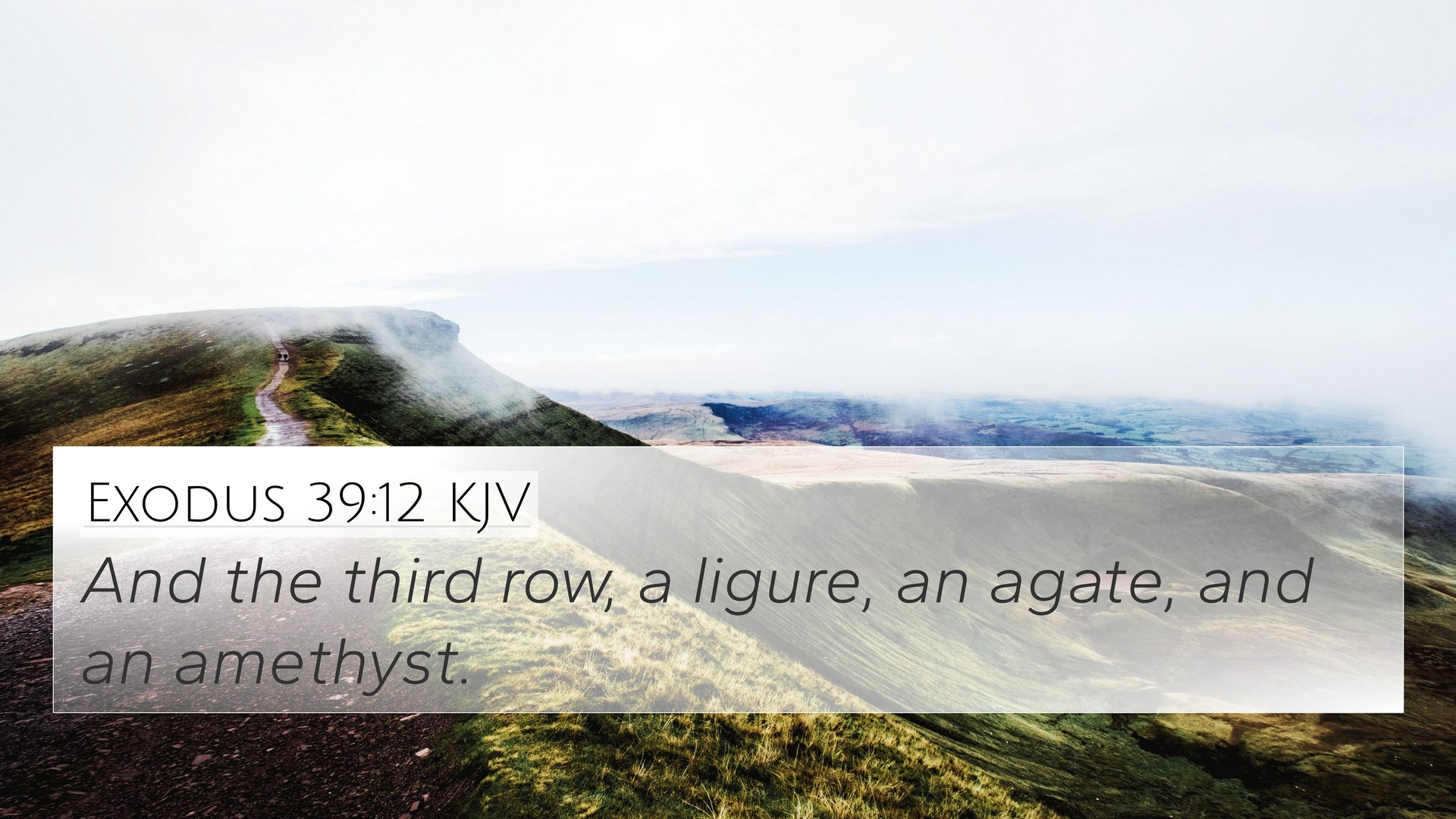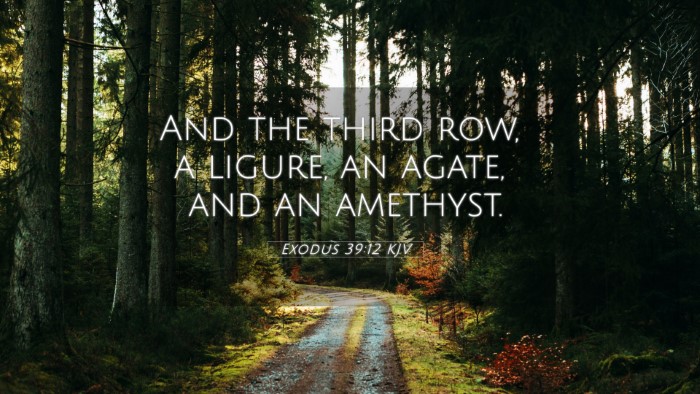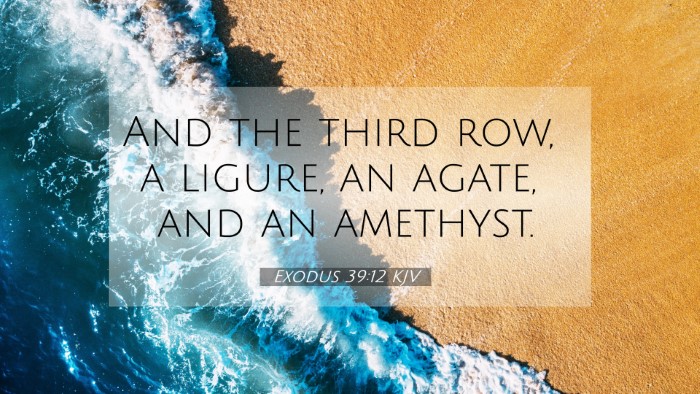Understanding Exodus 39:12
Exodus 39:12 (KJV): "And the second row, an emerald, a sapphire, and a diamond."
Overview
This verse is part of the detailed description of the High Priest's garments, specifically the breastplate which is adorned with twelve precious stones, each representing one of the twelve tribes of Israel. The significance of these stones is multifaceted, embodying beauty, representation, and divine communication.
Commentary Insights
This section summarizes insights from various public domain commentaries, including those by Matthew Henry, Albert Barnes, and Adam Clarke:
Matthew Henry's Commentary
Matthew Henry emphasizes the symbolic significance of the stones, noting that they represent the names of the tribes. He interprets the emerald, sapphire, and diamond as indicators of God's promise and presence among His people. Each stone is a reminder of the covenant and the glory of God, reflecting the beauty of holiness.
Albert Barnes' Commentary
Albert Barnes notes that these particular stones were chosen for their worth and brilliance, which underscores the notion that God desires the best for His servants and their representations. He highlights the idea that the priest bears the names of Israel before God, illustrating the intercession role played by the priesthood.
Adam Clarke's Commentary
Adam Clarke provides details about the specific qualities of each gem, suggesting that they were meant to convey light and beauty—akin to the divine light of God. He also discusses the historical context of these stones, linking their usage in the breastplate to the cultural understanding of gemstones in the ancient world.
Connections and Cross-References
This verse, while specific, has thematic links to several other scriptures. Here are some cross-references that illustrate the connections:
- Revelation 21:19-20 - Describes the foundations of the New Jerusalem, emphasizing precious stones similar to those in the priest's breastplate.
- 1 Peter 2:9 - Indicates that believers are a chosen generation, akin to the chosen tribes represented by the stones.
- Numbers 27:21 - Shows the priest's role in guiding decisions for the people, paralleling the responsibilities tied to the stones.
- Isaiah 54:11 - Uses the metaphor of precious stones to represent God’s restoration and beauty.
- Hebrews 4:14 - Links the High Priest's intercessory role to the work of Christ, as a greater High Priest.
- Exodus 28:17-20 - Earlier instructions on the breastplate highlight the significance of each stone, enhancing the understanding of Exodus 39:12.
- Ephesians 2:19-22 - Speaks to the believers being built into a holy temple, reminiscent of the decorum of God’s dwelling portrayed in the Old Testament.
Thematic Analysis
When considering the thematic connections of Exodus 39:12, we see ideas of representation, beauty, and divine presence. This verse speaks to:
- God’s Covenant: The stones reflect God’s ongoing relationship with Israel.
- Holy Representation: The priest’s role as an intercessor is illustrated through the breastplate.
- Divine Beauty: The use of precious stones signifies the beauty in God’s creation and His attributes.
- Identity of God’s People: Each stone denotes a tribe, indicating individuality within a collective identity.
Further Reflections
When exploring inter-Biblical dialogue through Exodus 39:12, we recognize the continuity of themes from the Old Testament to the New Testament. Believers today can learn about God's unchanging nature and His dedication to His people, mirroring the commitment found in the descriptions of the High Priest's attire.
Tools for Cross-Referencing
For deeper study, one may utilize various tools and methods for cross-referencing biblical texts:
- Using a Bible concordance to find related scriptures and themes.
- Engaging in cross-reference Bible study methods to connect passages thematically.
- Consulting Bible reference resources that provide insights into interconnections.
- Applying comprehensive Bible cross-reference materials in personal study or sermon preparation.
Conclusion
Exodus 39:12 offers rich insight into God’s design for His people, showcasing both individual and collective representation through the symbolism of precious stones. As we explore the connections and implications of this scripture, we can draw parallels to our own identities as members of God's family, reminiscent of the priestly role established in the days of Moses. By employing cross-referencing techniques, believers can deepen their understanding of the significance of such verses and appreciate the interconnected narrative of Scripture.


